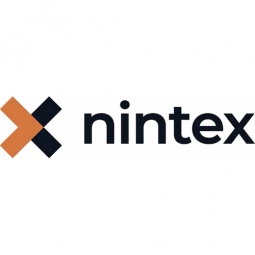Technology Category
- Analytics & Modeling - Process Analytics
- Cybersecurity & Privacy - Security Compliance
Applicable Industries
- Life Sciences
- Pharmaceuticals
Applicable Functions
- Logistics & Transportation
- Quality Assurance
Use Cases
- Last Mile Delivery
- Supply Chain Visibility
Services
- System Integration
- Training
About The Customer
Roche Diagnostics is a world leader in the pharmaceutical industry, developing medicines and diagnostics that help patients live longer, better lives. The company is based in Singapore and is one of the fastest-growing pharmaceutical companies in the region. As the pharmaceutical landscape undergoes constant change, evolving regulatory compliance, and industry disruption, Roche Diagnostics is always looking for ways to modernize and streamline its operations to maintain its leading position in the industry.
The Challenge
Roche Diagnostics, one of the fastest-growing pharmaceutical companies in Singapore, was facing challenges due to its rapid growth. The company needed to digitize its processes for better visibility and efficiency. The growth brought on a set of challenges to scale appropriately and the company needed flexible solutions that would evolve with the fast-paced company and clear the way for important research and advances in the field of diagnostics. Roche was looking for business process rationalization, end-user efficiency, mobile integration, better process compliance and visibility. The company was dealing with mounds of paperwork and was in need of a solution to streamline its operations.
The Solution
Roche Diagnostics turned to K2 Software to modernize and streamline workflows across the organization. Using Nintex K2 Five, Roche automated simple travel requests, to complex processes, like its 60,000 annual requests for delivery of goods. Renevey and his teams built Nintex K2 Five workflow applications for everything from simple processes, like travel requests and training approvals, to complex, long-running processes. With more than 20 workflows providing end-to-end process management, Roche has seen dramatic improvements in daily operations. The automation has helped the company reduce turnaround times and improve traceability with end-to-end process oversight.
Operational Impact
Quantitative Benefit

Case Study missing?
Start adding your own!
Register with your work email and create a new case study profile for your business.
Related Case Studies.

Case Study
Case Study: Pfizer
Pfizer’s high-performance computing software and systems for worldwide research and development support large-scale data analysis, research projects, clinical analytics, and modeling. Pfizer’s computing services are used across the spectrum of research and development efforts, from the deep biological understanding of disease to the design of safe, efficacious therapeutic agents.

Case Study
Fusion Middleware Integration on Cloud for Pharma Major
Customer wanted a real-time, seamless, cloud based integration between the existing on premise and cloud based application using SOA technology on Oracle Fusion Middleware Platform, a Contingent Worker Solution to collect, track, manage and report information for on-boarding, maintenance and off-boarding of contingent workers using a streamlined and Integrated business process, and streamlining of integration to the back-end systems and multiple SaaS applications.

Case Study
Process Control System Support
In many automated production facilities, changes are made to SIMATIC PCS 7 projects on a daily basis, with individual processes often optimised by multiple workers due to shift changes. Documentation is key here, as this keeps workers informed about why a change was made. Furthermore, SIMATIC PCS 7 installations are generally used in locations where documentation is required for audits and certification. The ability to track changes between two software projects is not only an invaluable aid during shift changes, but also when searching for errors or optimising a PCS 7 installation. Every change made to the system is labour-intensive and time-consuming. Moreover, there is also the risk that errors may occur. If a change is saved in the project, then the old version is lost unless a backup copy was created in advance. If no backup was created, it will no longer be possible to return to the previous state if and when programming errors occur. Each backup denotes a version used by the SIMATIC PCS 7 system to operate an installation. To correctly interpret a version, information is required on WHO changed WHAT, WHERE, WHEN and WHY: - Who created the version/who is responsible for the version? - Who released the version? - What was changed in the version i.e. in which block or module of the SIMATIC PCS 7 installation were the changes made? - When was the version created? Is this the latest version or is there a more recent version? - Why were the changes made to the version? If they are part of a regular maintenance cycle, then is the aim to fix an error or to improve production processes? - Is this particular version also the version currently being used in production? The fact that SIMATIC PCS 7 projects use extremely large quantities of data complicates the situation even further, and it can take a long time to load and save information as a result. Without a sustainable strategy for operating a SIMATIC PCS 7 installation, searching for the right software version can become extremely time-consuming and the installation may run inefficiently as a result.

Case Study
ELI LILLY ADOPTS MICROMEDIA’S ALERT NOTIFICATION SYSTEM
Pharmaceutical production is subject to a strict set of enforced rules that must be adhered to and compliance to these standards is critically necessary. Due to the efforts of WIN 911’s strategic partner Micromedia, Lilly was able to adopt an alarm notification infrastructure that integrated smoothly with their existing workflows and emergency hardware and protocols. These raw energy sources enable the industrial process to function: electricity, WIN-911 Software | 4020 South Industrial Drive, Suite 120 | Austin, TX 78744 USA industrial steam, iced water, air mixtures of varying quality. Refrigeration towers, boilers and wastewater are monitored by ALERT. Eli Lilly identified 15000 potential variables, but limitations compelled them to chisel the variable list down to 300. This allowed all major alarms to be covered including pressure, discharge, quantity of waste water discharged,temperature, carbon dioxide content, oxygen & sulphur content, and the water’s pH.









